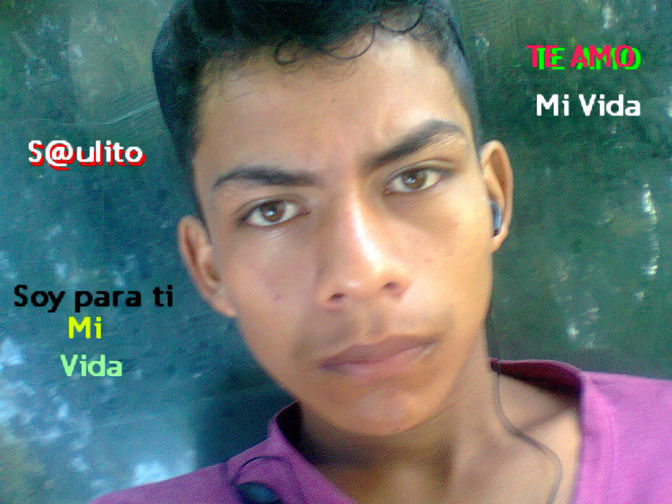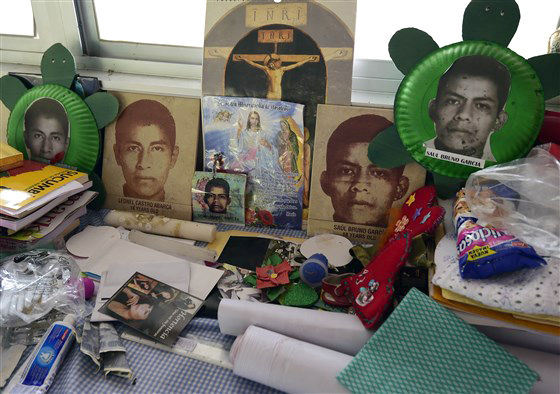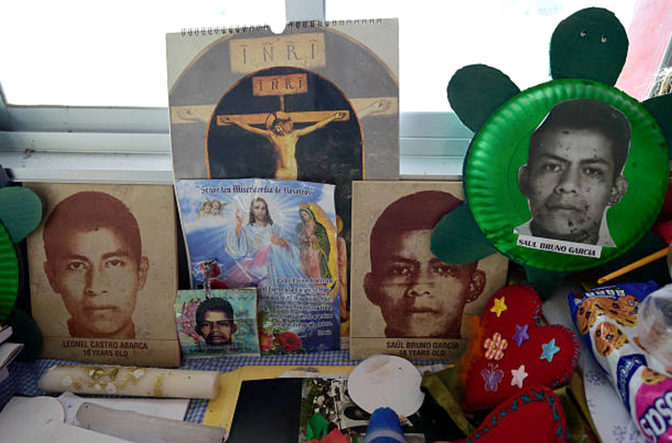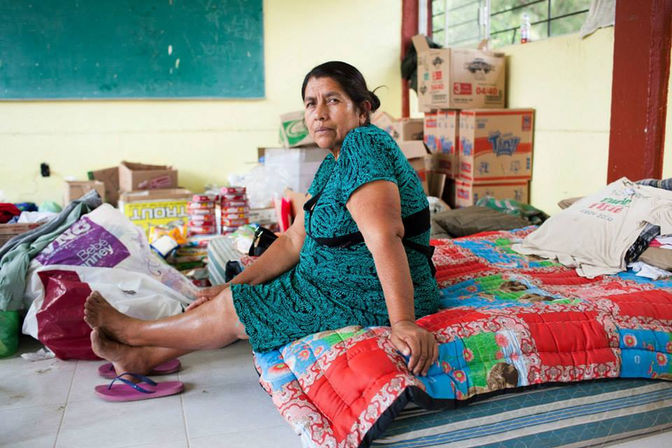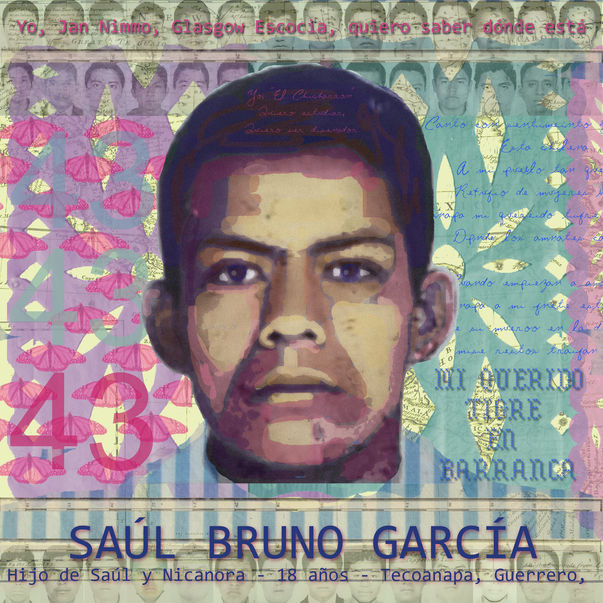
Saúl Bruno García
Its painful when I think about him. I cry every night and day. I want the government to just give him back already. The torture and the desperation that we suffer for our children doesn’t have a name horrible enough to express it.
- Nicanora García
Of the 43 students who were forcibly disappeared in Iguala on September 26, 2014, eight were from the Tecoanapa municipality in the Costa Chica region of Guerrero. Saúl Bruno García was one of them. Being a young man from the community of Magueyitos, Saúl realized at a young age that it would be difficult to achieve a different future than spending his days in the field. Among his siblings, Saúl is the only one who wanted and could continue with his studies. Although he desired to excel, he did not forget his obligations to his family. He helped to support the house with the 80 pesos he earned each day growing corn. His mother Nicanora García González made bread to sell in the family’s one-room home, and on Sunday’s traveled three hours to Ayutla to bring back fresh fish to sell locally.
At the age of 15, Saúl decided to move to a neighboring town to attend high school. He turned out to be a student of excellence, and after graduation considered both veterinary medicine and graphic design. He he was admitted to both the Ayotzinapa Rural Teachers’ College, and the Autonomous University of Guerrero, and decided to become a teacher, with the plan to pursue additional studies in graphic design in Mexico City.
Saúl entered Ayotzinapa with his closest friend since elementary school, Leonel Castro Abarca, who is also among the 43 disappeared students. His new classmates nicknamed him Chicharrón (a dish consisting of fried pork skin,) which he complained about because he wanted something more serious. He joined the Casa Activista and made plans with several new friends to visit each other during their vacations.
Saúl and Leonel returned home together on September 17, during a week of leave during the students testing period. Saúl worked in the corn field for his father who suffers from diabetes, a condition that has worsened since his son’s disappearance. He told his mother he liked school because “…you learn to fight for yourself here.”
There is no telephone signal in Magueyitos, and the family has no cell phone. Nicanora García learned of the attacks in Iguala from the newspaper, on her weekly trip to Auytla to buy fish. Now, Doña Nicanora has dedicated all her effort to seeing that the 43 sons are returned home to fulfill their dreams of becoming teachers. Truth and justice have become her daily routine.
“A mother is capable of everything for her son.
I would have preferred to give my life, and to leave my son free.”



